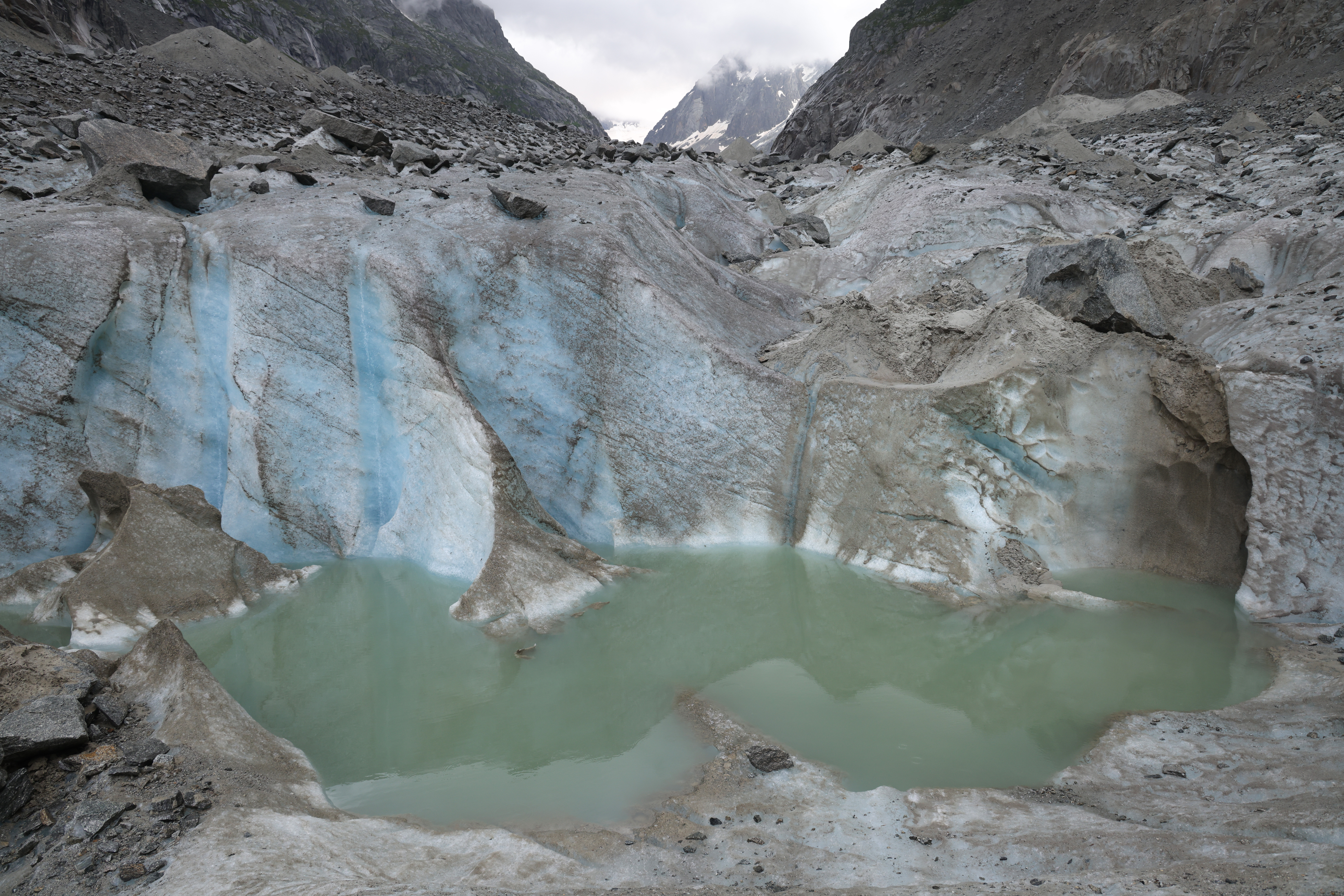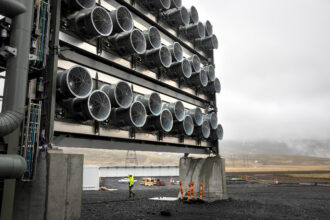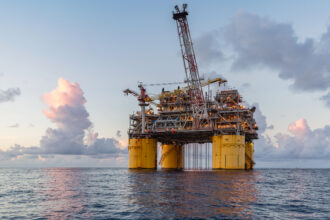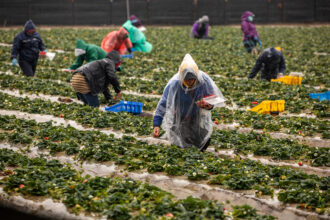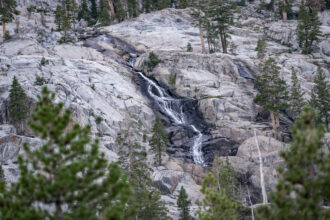“This monument is to acknowledge that we know what is happening and what needs to be done. Only you know if we did it.”
This phrase is engraved into a plaque placed on a rocky mountainside in western Iceland to honor Okjökull, a now-melted glacier that was deemed in 2014 the first in the country to be lost to climate change.
In this case, the glacier received a funeral to mark its “death.” As global warming accelerates, many other glaciers around the world are suffering a similar fate, melting so fast that scientists are struggling to keep track, The Washington Post reports.
We’ve long known that ice sheets, frozen soil and sea ice release vast quantities of water as they thaw, contributing to sea-level rise and flooding communities in the Arctic. Now, a growing body of research shows water isn’t the only thing melting glaciers can leave behind.
Toxic Melt: Glaciers are some of the top victims of global warming, but recent research shows they may also be ticking climate bombs. Over the past few years, scientists have discovered abundant stores of the greenhouse gas methane in glacial melt across the world—from Norway to the Canadian Yukon to China. They’ve yet to determine exactly how much of this “ancient” methane is being released into the atmosphere, but many say the phenomenon represents a climate feedback loop.
“It’s just this very stark image of climate change, melting these glaciers and then releasing methane,” Gabrielle Kleber, a scientist who studies glaciers at the University of Cambridge, told Inside Climate News in 2023.
Frozen soil known as permafrost is similarly releasing methane as it thaws, adding a potent greenhouse gas to an already fragile Arctic environment. Heavy metals like mercury and arsenic are also emerging from this melting soil and ice. A new study led by the University of Southern California found that mercury from thawing permafrost could threaten Alaska Native peoples by leaching into the fish they eat, which can cause permanent lung or brain damage.
“Where I’m from in Beaver, there’s no grocery stores. We build our own cabins. We haul our own water. We hunt our own food,” Darcy Peter, who is Koyukon and Gwich’in Athabascan from Beaver, Alaska, and works on climate adaptation at the Woodwell Climate Research Center, told Grist. “We definitely feel it on a physical scale, an emotional scale and a financial scale—the decline of salmon and the presence of mercury on the Yukon River.”
If you’re not terrified enough already, I’ve got another item to add to the list of things emerging from melting Arctic ice: viruses. In 2014, scientists were able to revive a dormant virus sample pulled from 30,000-year-old Siberian permafrost. This process has been repeated several times with a number of different pathogens, a class dubbed “zombie” viruses.
Scientists are not currently concerned that these ice-trapped organisms will fuel a large-scale pandemic. However, an anthrax outbreak in 2016 was believed to be caused by a dead reindeer unearthed by melting permafrost, NPR reported.
Glacial Culture: Throughout history, glaciers have held special meaning for humanity, but these traditions are imperiled as ice vanishes. This is an acute fear for many local people across Peru’s Central Andes, where glaciers threaten to disappear entirely by the 2050s, which journalist Alexa Robles-Gil wrote about for Inside Climate News. Richart Aybar Quispe Soto, a local hospital worker in this region, told Robles-Gil that he worries his son won’t get to experience the wonder of these icy behemoths.
“When my father took me as a child to the glaciers, it was all white,” he said. “Today, there’s only black rocks.”
While some are hosting glacial funerals like the one in Iceland to cope with this loss, many people are scrambling to see the ice one last time—a new trend known as “last-chance tourism.” The New York Times covered the cultural phenomenon earlier this year at the Mer de Glace glacier in the French Alps, which is experiencing a tourism boom that is likely to be short-lived as temperatures rise, experts say.
These tourist trips can be risky, though. Authorities confirmed Monday that at least one person died during a tour of the Breiðamerkurjökull glacier in southern Iceland when part of an ice canyon collapsed, BBC News reports.
In recent years, some glacial tourists and hikers have stumbled upon ancient artifacts that were once held within the ice, from an Iron Age sandal to a Viking sword. Others have made far more unsettling discoveries on melting glacial paths: preserved corpses.
More Top Climate News
An Associated Press report revealed that clashing federal policies could leave communities in the dark about the flood risks they face from dams built upstream—and prevent them from tapping into crucial insurance discounts. The Federal Emergency Management Agency runs a program that distributes subsidies for flood insurance if communities document and take steps to reduce their inundation risk. But certain agencies that regulate dams, like the Federal Energy Regulatory Commission and the U.S. Bureau of Reclamation, have policies that limit the release of dam information for security reasons, which has caused problems for homes surrounding the structures.
As climate change accelerates, flooding is more common and severe, overwhelming many of the country’s aging dams. An analysis of federal data by Inside Climate News led by my colleague Kristoffer Tigue found that hundreds of dams across the Upper Midwest are in poor or unsatisfactory condition.
In other news, the U.S. Open tennis competition started this week in New York City, where temperatures could reach 93 degrees Fahrenheit on Wednesday. In the past few years, organizers have implemented more strategies to help attendees and tennis players beat the blistering heat, from retractable roofs to more trees for shade, Hilary Howard reports for The New York Times. Other major sporting events, including the Olympics, have also had to contend with climbing temperatures, which I wrote about in July.
Recent research shows that nearly every lake in North America is exposed to wildfire smoke each year. And it turns out smoke and water may not mix well: Smoke can fuel sometimes-toxic algal blooms, change light conditions and alter temperatures in the water, Stefan Lovgren reports for National Geographic. Researchers are still uncovering how these impacts will change lake ecosystems, but they say that the effects could be profound—and potentially problematic for the people and fish that depend on them.
In Philadelphia, a nonprofit is working to grow fruit trees that can handle rising temperatures to help feed local communities and increase the number of plants absorbing carbon, Susan Phillips writes for WHYY. Earlier this year, the U.S. Department of Agriculture updated its plant hardiness zone maps, a key resource for gardeners that shows where and when perennial plants are most likely to grow. The new map accounts for shifts with climate change, and shows that tropical plants like olive trees, bananas and Chilean guava could soon thrive in Philadelphia, which inspired the Philadelphia Orchard Project to start growing them.
Climate change and “corn sweat” are fueling extreme heat in the Midwest, which could move into the mid-Atlantic later this week, Andrea Thompson reports for Scientific American. For those of you wondering what the heck corn sweat is, Thompson has you covered: “The latter happens when corn, soybeans and other crops release moisture as the temperature climbs. This process, known technically as evapotranspiration, is akin to how humans perspire in the heat.”
About This Story
Perhaps you noticed: This story, like all the news we publish, is free to read. That’s because Inside Climate News is a 501c3 nonprofit organization. We do not charge a subscription fee, lock our news behind a paywall, or clutter our website with ads. We make our news on climate and the environment freely available to you and anyone who wants it.
That’s not all. We also share our news for free with scores of other media organizations around the country. Many of them can’t afford to do environmental journalism of their own. We’ve built bureaus from coast to coast to report local stories, collaborate with local newsrooms and co-publish articles so that this vital work is shared as widely as possible.
Two of us launched ICN in 2007. Six years later we earned a Pulitzer Prize for National Reporting, and now we run the oldest and largest dedicated climate newsroom in the nation. We tell the story in all its complexity. We hold polluters accountable. We expose environmental injustice. We debunk misinformation. We scrutinize solutions and inspire action.
Donations from readers like you fund every aspect of what we do. If you don’t already, will you support our ongoing work, our reporting on the biggest crisis facing our planet, and help us reach even more readers in more places?
Please take a moment to make a tax-deductible donation. Every one of them makes a difference.
Thank you,

